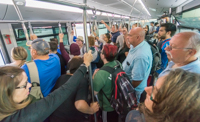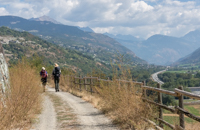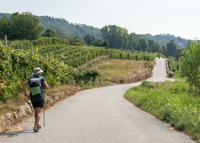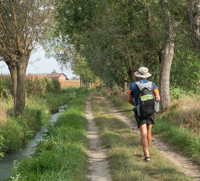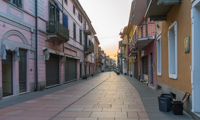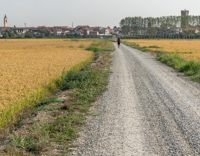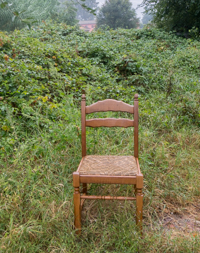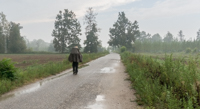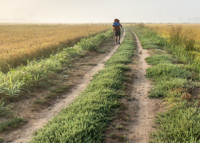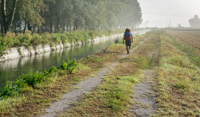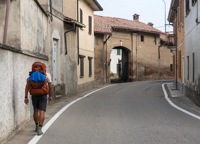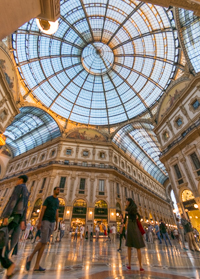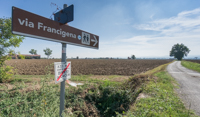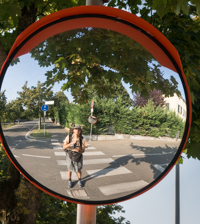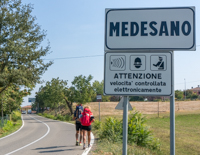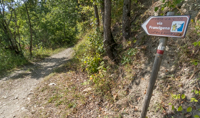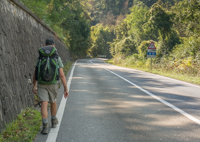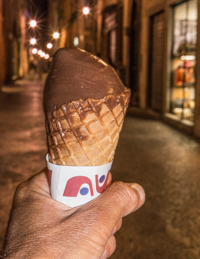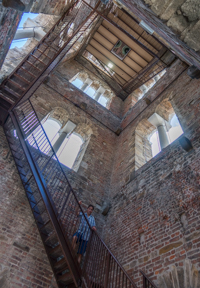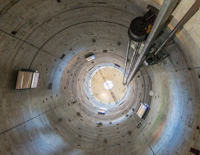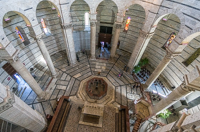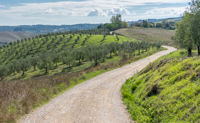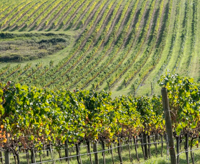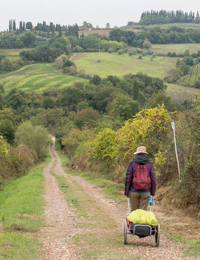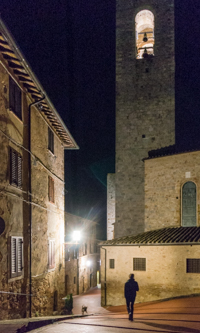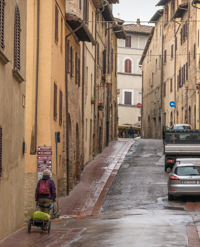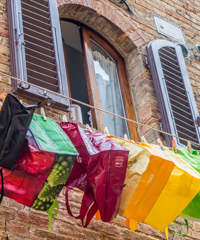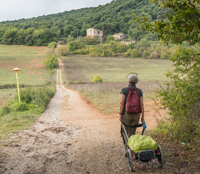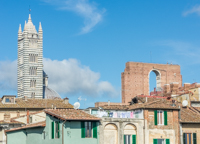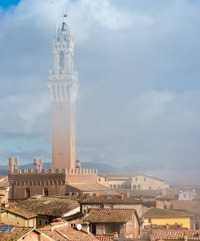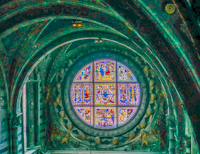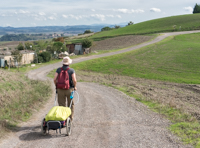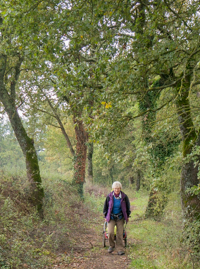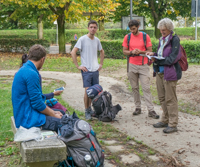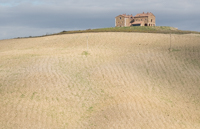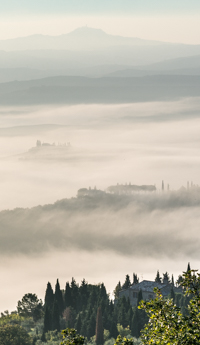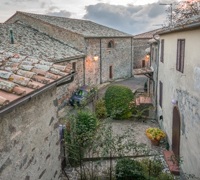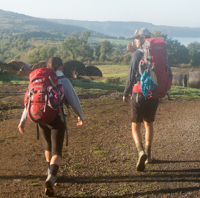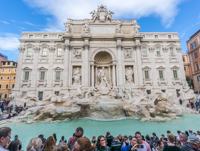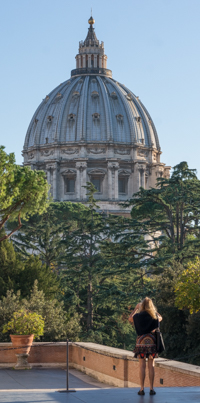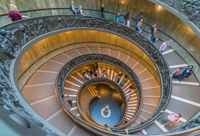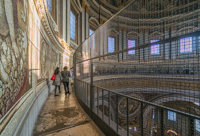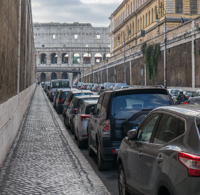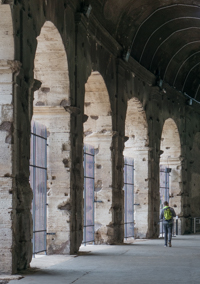From 9 September to 26 October 2016 I walked the second half of the medieval pilgrimage route known as the Via Francigena from Aosta to Roma, a distance of approximately 933 km (580 miles). Some of that time was diverted from being a pilgrim to being a tourist, as I stopped in a few cities along the way for up to four days to visit museums and sites of religious or archeological significance. Upon my arrival in Roma, I toured such sites there for an additional nine days until my departure on 5 November.
This is the second pilgrimage route that I’d walked, the first being the Camino Francés three years earlier in 2013—photos from which appear elsewhere on this website. I found the experiences from these pilgrimages to significantly differ, for me personally and as a photographer.
The most fundamental difference between these pilgrimage experiences was the greatly fewer number of pilgrims on the Francigena than on the Camino. (And note that I walked these routes at the same time of year, beginning each pilgrimage in early September.) It is hardly an exaggeration to state that I saw more pilgrims during my first hour on the Camino Francés (as I departed my starting location of Saint-Jean-Pied-de-Port) than I saw on the Via Francigena during the entire 37 days of walking from Aosta to Roma. I’m referring here to the number of pilgrims I saw on the pilgrimage route, not to the additional pilgrims I encountered at pilgrim lodging.
There are at least a few reasons why I encountered so few pilgrims on the Via Francigena. The foremost reason is that fewer people walk the Francigena than walk the Camino. That smaller number was further diminished (especially in northern Italia) by the route often not being as standardized as is the Camino. Several organizations have responsibility for the Francigena across the terrain (and even at identical locations), and while they may agree that the route should connect the same towns, they may disagree on details of the route between them. Pilgrims using different guidebooks may therefore be led to travel between towns by different itineraries. Similarly, as a given organization with responsibility for the Francigena’s route may have changed the details of that route over time, even guidebooks produced by the same company, but revised at different times, may direct pilgrims to different routes.
Just how sparse were pilgrims on the Via Francigena? There were more than a few instances of at least a day’s duration during which I encountered no other pilgrim. And I recall one stretch of four days during which I did not see another pilgrim on the route.
|
|
|
As a photographer concentrating on the genre of “street photography” (rather than “landscape photography”) fewer pilgrims had the potential to provide fewer opportunities to produce images. That potential became the reality as there are approximately only a quarter the number of images that I’ve chosen to display for the Francigena than I did for the Camino. And some of the images here displayed come from my time as a tourist off of the Francigena rather than as a pilgrim on it.
The Nature of this Image Gallery
As with the gallery for images from the Camino Francés, my intention here is for this to be not, at one extreme, a detailed blog of experiences enhanced with images, nor at the other extreme simply a display of images absent of narrative, but rather an eclectic (and at times quirky) chronological personal experience in Italia of the Via Francigena and, in a few instances, nearby cities. A few images during my stay in Roma also come from the Vaticano (Vatican City).
Photographic Equipment
I chose photographic equipment for this pilgrimage to minimize weight and bulk without unduly sacrificing image quality, especially under low light.
• Camera: Sony NEX-6 (16.1 MP APS-C CMOS sensor) • Sony E-mount 10–18mm f/4 OSS • Sony E-mount 35mm f/1.8 OSS • Sigma E-mount 60mm f/2.8 DN When not in use, the equipment was kept in a small fanny pack worn at my front for quick access. All images were recorded in RAW format, processed in Adobe Lightroom 5, and exported in JPEG format. Accessing Gallery Images
Full-sized images in the gallery can be accessed in either of two ways. Each such image has a thumbnail version on this page (with short caption) which when clicked will display the full-sized image and the associated caption (frequently expanded from that of the thumbnail image and providing off-site links for additional information). Upon accessing a full-sized image, additional such images can be accessed by sequential forward or backward movement through the gallery using either each image’s web page navigational arrows (to left and right of each image) or with your browsing device’s left/right arrow keys.
|
